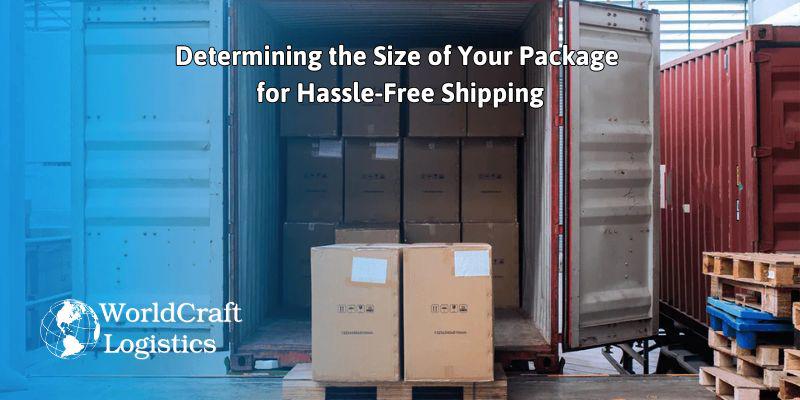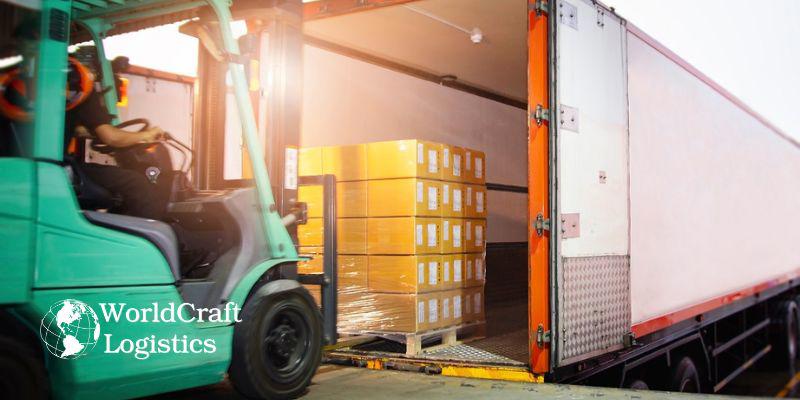
Starting June 1st, 2023 Our warehouse fee will be $0.65/cubic foot per month
In effort to lower the warehouse storage fee during inflation, we have went narrow aisle racking.This construction took us four months but the project is finally completed. With narrow aisle racking, we are able to drop storage by 24%.We as partners will go through this inflation together.
03/07/2024
Ever found yourself scratching your head over cubic feet calculations for your shipments? Fear not! In this blog post, we're unraveling the mystery behind why carriers insist on these measurements and providing you with a step-by-step guide on calculating the volume of your packages. Dive into the world of accurate dimensions and discover how optimizing your packaging can be the key to keeping those shipping costs at bay. Let's make cubic feet your new best friend in the shipping game!
Ever wondered how to decode the language of cubic feet? It's more than just a unit of measurement; it's the key to unveiling the volume of an object with precision. Picture this: cubic feet not only arm carriers with essential data, revealing the three-dimensional space a package occupies during transit, but it's also a crucial factor in determining shipping costs. After all, carriers wouldn't want to risk undercharging for a shipment that, although light, engulfs a significant chunk of capacity.
To demystify cubic feet, let's break it down. To calculate the cubic feet of a package, all you need is the magic touch of multiplication: length x width x height. Take a one-cubic-foot cube, for instance—it's as simple as 1 foot x 1 foot x 1 foot.
Remember, whenever you embark on the journey of cubic feet calculation, armed with the measurements in feet, the result will be your ticket to accurate volume determination.

Now, here's where it gets interesting. While larger shipments might dance to the tune of feet, smaller ones may opt for inches. Some carriers play by different rules, specifying feet for the big players and inches for the smaller contenders. The catch? Double-checking the carrier's preference is vital to avoid those dreaded extra fees.
If inches are on the agenda, fear not - the same cubic feet formula applies. For example, a package measuring 12 inches in length, 6 inches in width, and 12 inches in height would yield a volume of 864 cubic inches. But wait, the plot thickens when converting cubic inches to cubic feet. Brace yourself for a bit of math magic: divide the cubic inch volume by 1728 (the magic number of cubic inches in a cubic foot). So, in our example, 500/1728 equals 0.5 cubic feet.
There you have it—unraveling the cubic feet mystery, one dimension at a time!
See other articles:
👉 What is the CBM in shipping? How to calculate and specific examples

When it comes to shipping your products, knowing the volume of your packaged items is crucial to avoid unexpected shipping expenses. Carriers often consider factors such as the overall cubic feet length, weight, height, and width of your package to calculate shipping rates based on its shape. Providing an accurate volume measurement in the specified unit ensures a seamless shipping experience.
To accurately measure your package's dimensions, consider the shape of your product once it's packed. Grab a tape measure and record the length, width, and height of the package. Pay attention to the furthest points of each dimension, including any bumps, bulges, or protruding parts of the parcel.
*Pro Tip: Round up to the nearest inch for precision.
If you're using boxes for packaging, you have a distinct advantage in easily documenting precise measurements. This practice not only helps you manage your shipping costs effectively but also enables you to secure the best available shipping rates for your online store. Follow these three steps to determine the cubic footage:
Step 1: Measure the length, which is the long side of the box, along the side of the longest flap.
Step 2: Rotate the box 90 degrees and record the width, found on the side with the short flap.
Step 3: Measure the height, ensuring the flaps are closed from top to bottom.
By following these guidelines, you'll be well-equipped to provide accurate volume measurements, optimizing your shipping strategy for a successful online retail experience.
If you prefer gauging your parcels in an alternative unit, there's a simple workaround to accurately determine the cubic volume in feet. Begin by computing the length x width x height in your chosen units, then proceed with the conversion steps outlined below:
For Cubic Inches: Divide the resulting figure by 1728.
For Cubic Yards: Boost the outcome by multiplying it by 27.
For Cubic Meters: Scale up the result by multiplying it by 35.31.

When it comes to shipping, costs can vary significantly based on whether carriers use a package's weight or cubic feet to determine the price. For smaller packages, the primary factor in determining shipping costs is often the combined weight of the item and its packaging.
However, for larger packages, the role of cubic feet becomes more crucial. It's essential to communicate with your preferred carrier to understand their pricing model, as the dimensions of your package can impact your final shipping expenses.
Carriers may employ cubic feet as a factor in calculating shipping rates, while others might use dimensional weight (DIM). In DIM-based pricing, carriers typically choose the greater of the two values to ensure they charge accordingly. This practice is more common for bulkier packages that occupy a significant portion of the carrier's capacity during transportation.
The dimensional weight of a shipment is determined by multiplying the package's size in cubic feet by its weight, then dividing the total by a specific figure set by each courier. Optimizing your packaging can potentially reduce shipping costs. Here are some quick tips for optimizing package dimensions:
1. Use the smallest effective box size.
2. Minimize excess bulky packing materials, such as bubble wrap or foam blocks.
3. Explore custom boxes that perfectly fit your item.
4. Utilize online shipping calculators to compare rates based on package dimensions or weight.
Understanding how cubic feet factor into shipping costs empowers you to make informed decisions and potentially save on your shipping expenses.
Unlock the power of precise shipping cost estimates with WorldCraft Logistics. Transforming your packaging dimensions into cubic feet isn't just a numbers game – it's the key to securing accurate information for carriers and potentially slashing your shipping expenses. Optimize your packaging dimensions to unlock the best rates offered by over 250 top carriers. WorldCraft Logistics (WCL) is your ultimate ally, making it easy for you to compare prices and connect with the most value-packed shipping rates, no matter where your end customer resides.
Discover the magic of instant shipping cost estimates – absolutely free and just a few clicks away! Enter your shipment weight and destination to unveil exclusive pre-negotiated rates tailored for your store's orders today. Say goodbye to shipping cost uncertainties and embrace the efficiency of WorldCraft Logistics!
SEO
Digital Marketing/SEO Specialist
Simon Mang is an SEO and Digital Marketing expert at Wordcraft Logistics. With many years of experience in the field of digital marketing, he has shaped and built strategies to effectively promote Wordcraft Logistics' online presence. With a deep understanding of the logistics industry, I have shared more than 500 specialized articles on many different topics.

Education
01/05/2025

Education
02/18/2025

Education
01/01/2024

Education
08/28/2024

Education
11/13/2023